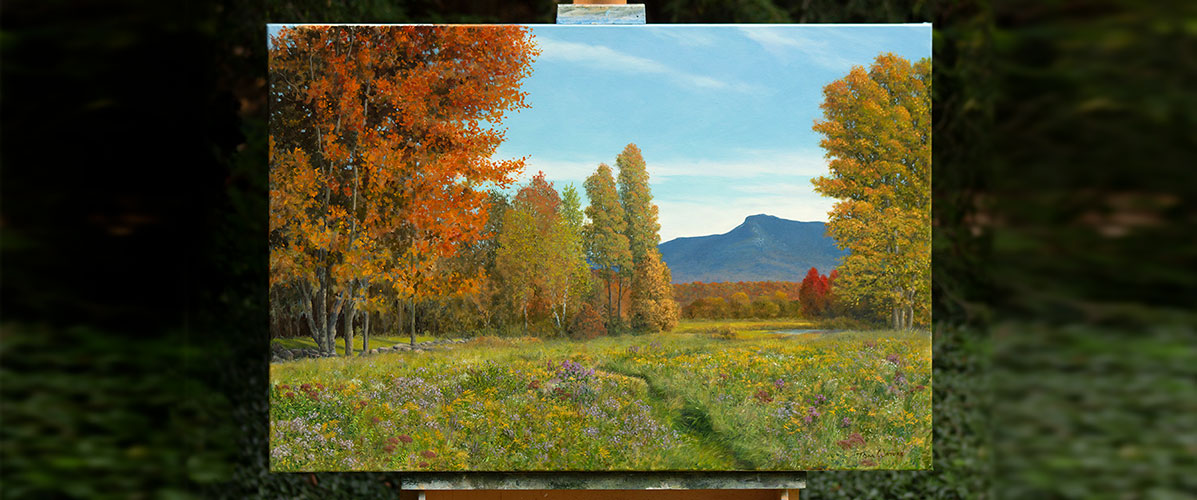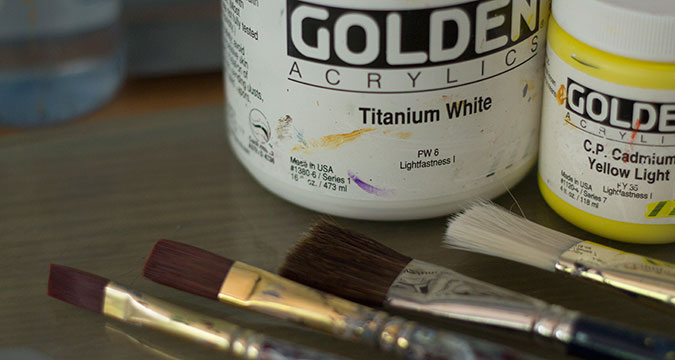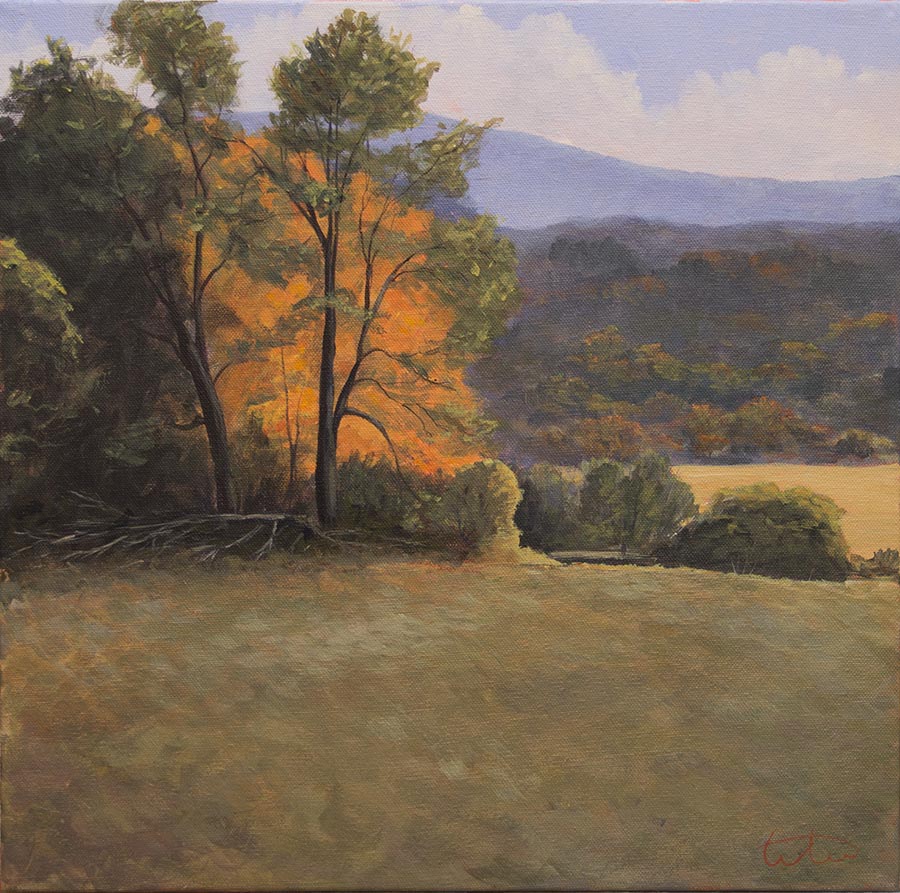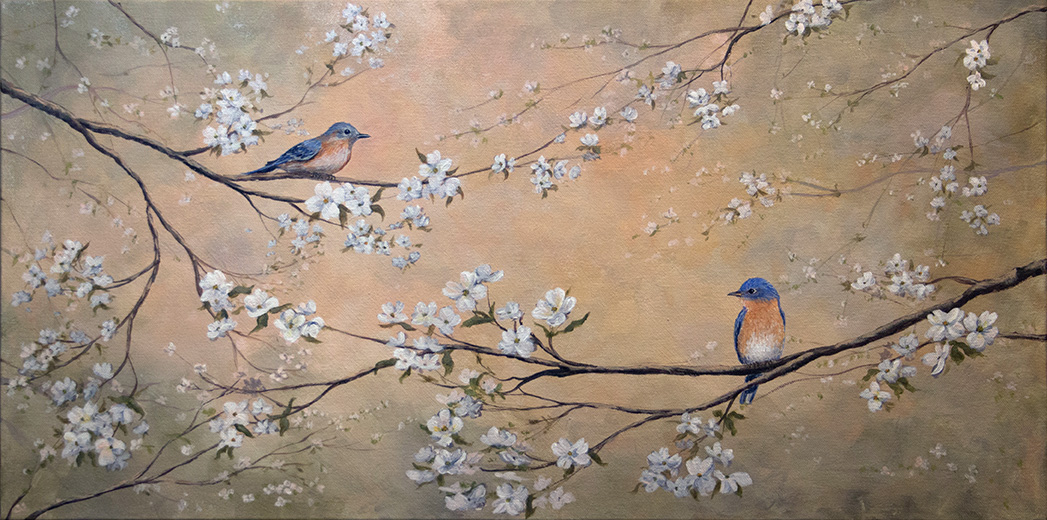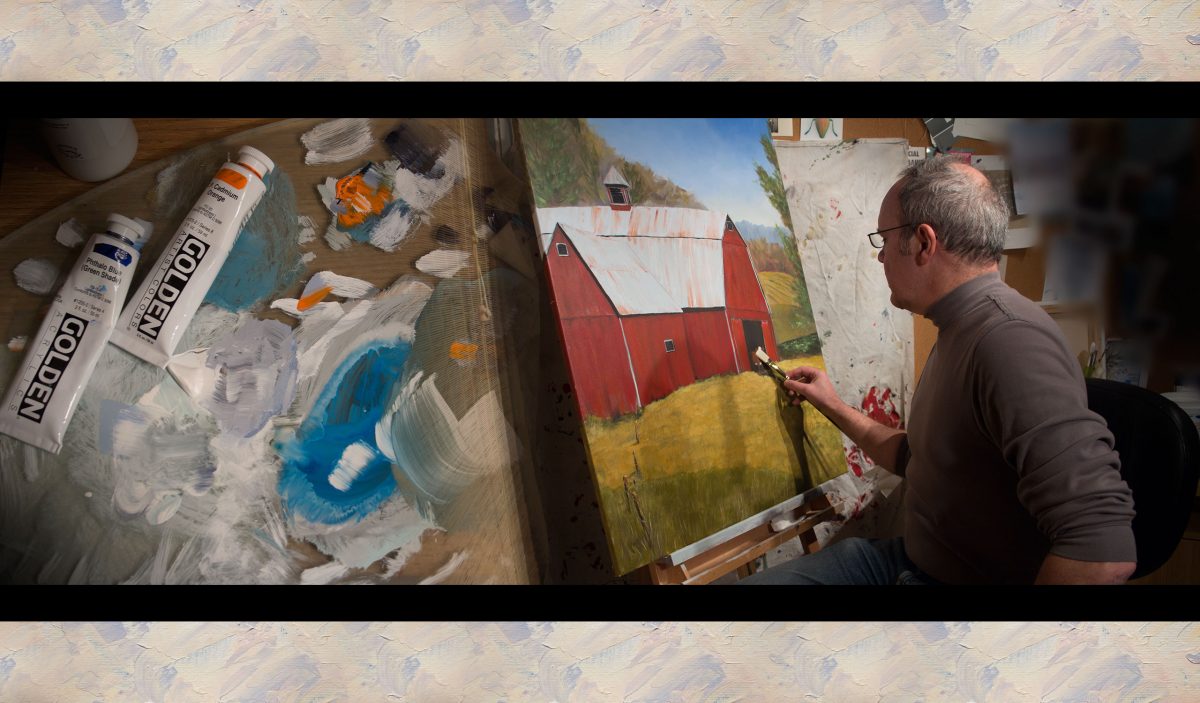Recently I decided to give oil paints a try. I thought it worth sharing some of my experience and frustrations with the medium. I’ve been working in acrylics exclusively the past few years. And even though I painted using oils in my late teens – that was a long time ago and I don’t remember any of it.
I haven’t actually switched to oils 100% but I want to be able to work in both mediums as the situation and mood demands. So I picked up some Windsor & Newton Water Mixable Oil paints and mediums (water mixable thinner and Liquin) and have been doing a few paintings to get a feel for them.
Coming from acrylics there are some basic things that make oils a challenge. First, the dry times. Since oils take much longer to dry, the approach to a painting has to be different. Unless you paint wet-into-wet with acrylics and use a medium or acrylic paint that stays “open” or wet longer, then you have to rethink your approach to a painting. Instead of layering and correcting colors, values, etc. all in one sitting as you can easily do with acrylics, you have to either scrape off your mistakes, wait a long time between layers, or get very good at painting thin layers that you can then carefully apply a thicker layer over in oils. The challenge is that your paint will readily mix since it stays wet. So careful planning, accurate mixing of your colors, and precise brushwork become more important when using oils.
I will probably anger some acrylic artists with this next statement, but I almost feel that working in oils forces you to be, if not a better artist, a more careful one, than working in acrylics. I know it depends on your style of painting, but in general you will want to have more control over your paint and its application when working in oils, at least working in the “alla prima” (all in one sitting) method. Certainly if you wish to develop a painting slowly over time in layers you can do that in oils, just like with acrylics but over a longer timespan. You have to develop patience. With acrylics I like that I can paint whenever I am in the zone and keep painting for as long as I want. Oils force you to take more time.
